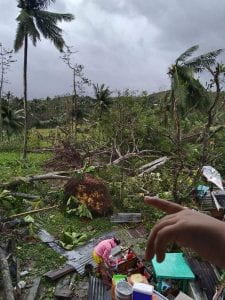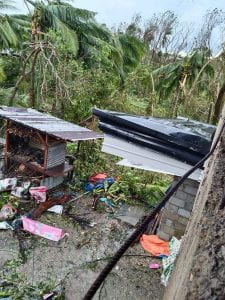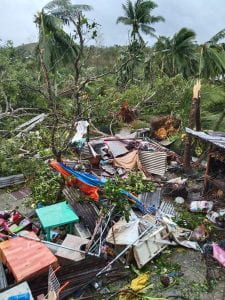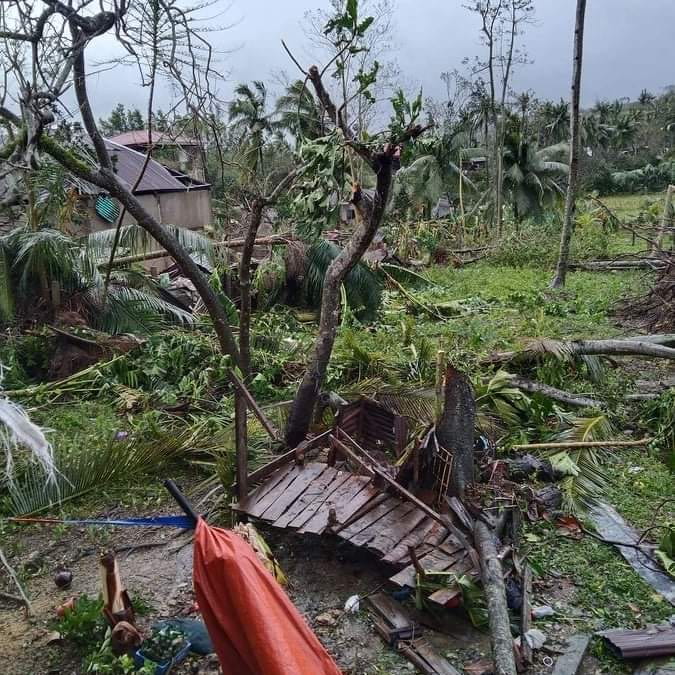Update: The White House has announced President Biden’s intent to nominate as Ambassador Extraordinary and Plenipotentiary Mrs. MaryKay Loss Carlson.
In May of 2021 I wrote for the International Law & Policy Brief about the storied relationship between President Duterte of the Philippines, former United States Presidents Obama and Trump, and my own cautious optimism for the prospects of the current White House occupant in swooning the Death Squad Mayor without condoning tyrannical behavior. The point of my piece was to emphasize the need for a stable US-Philippines relationship, with the empty ambassador posting being emblematic of the uncertainty ahead. Now, like many others have done in specific policy areas, it is appropriate to take stock of the health of the US interactions with the Philippines after more than a year into the Biden Administration.
Strengthened by the Storm?
The need for increased US support came quickly last year. As if the challenge of the pandemic in the Philippines wasn’t enough, amid approved Pasko celebrations, the category 5 super typhoon Rai made landfall on December 16. Crossing over seven provinces over the next 24 hours, the typhoon (known domestically as Odette) became one of the strongest recorded on planet Earth in 2021. This natural disaster was hard hitting for many of us from afar, as comparisons were quickly made to the devastating super typhoon Haiyan (Yolanda) of 9 years ago, which crashed into the Visayas region while I was living outside the city of Dumaguete on the island of Negros in 2013. The suffering of the distant observer pales when the conditions of the people in the affected provinces are considered, however, as the storm left 300 people dead and 60 missing in affected areas as reported at the end of December. Updated numbers in January now indicate 407 deaths, 1,150 injured, and 78 missing. An astonishing 3.1 million people have been displaced from their homes (some data puts the number of displaced individuals as low as 600,000), with an estimated 1.7 million homes destroyed or damaged. On the micro level, the typhoon ravaged critical infrastructure, even in Cebu, where contacts of mine reside. They relayed to me that some locales had no electricity and no running water, with barrels lining the streets from 6 am to midnight for water to be delivered by the city fire department. Private mineral water containers that usually sold for 30 PHP were being gouged to 100 PHP. Although conditions have begun to slowly improve, in provincial areas where NGO’s like Rise & Rebuild or Operation Blessing have been stretched thin, electricity remains scarce.
In response to the typhoon, the US had issued $19, 599, 845 in humanitarian funding by January 27, 2022 through the United States Agency for International Development (USAID) Bureau for Humanitarian Aid. As of February 3, that amount had reached $21.2 million, with the additional $1 million being announced by the Bureau at a UN briefing on February 2. NGO work is ongoing, and donations can still make a difference.
Even though the Philippines is far from a full recovery, have ties with the US been made stronger through this calamity? Yes – although it is hoped that more funding will be procured and continued humanitarian aid proffered – it would appear that the US has shown up in the Philippines’ time of need. But curiously, there are some glaring absences on the part of US diplomatic action that have smudged the clarity of their financial gesture. Most obviously, the White House has failed to comment directly on the typhoon (at least not in any place obvious to this frustrated internet searcher). This is a stark contrast to the attention paid by former President Obama when he personally and publicly made a statement about Typhoon Haiyan in the press room. Of course the leader of the free world has many crises to react to, and Haiyan was much more deadly in the number of lives lost; but the briefing room archive doesn’t so much as mention a release acknowledging the news or the cooperation between the two countries. There was even an easy opportunity to do so when the President’s intent to appoint Commissioners to the President’s Advisory Commission on Asian Americans, Native Hawaiians, and Pacific Islanders was published on December 20 – because three of the Commissioners are Filipino-American women! That very same day at the US Embassy in the Philippines, Chargé d’Affaires ad interim, Heather Variava, issued her disaster declaration. Not only has President Biden neglected to mention recent events, so too have his surrogates. Neither Secretary of State Antony Blinken nor Spokesman Ned Price (who went out of his way to give condolences in response to an explosion in Davao in 2016) have mentioned the typhoon. Even the State Department website, which lists a level 4 travel advisory for the Philippines, doesn’t spare a line or two about the disaster.

Photo Credit: Meriam Espinosa Teñedo, Pinamungajan, Cebu
It is not my goal to be overly critical of the Biden Administration’s effort to tend to Filipino affairs. Yes, the US has donated millions and millions of vaccines to the Philippines over the past year. Yes, Biden successfully invited Duterte to attend the Summit for Democracy. Yes, the crucial Visiting Forces Agreement has been renewed to keep American and Philippine military interests aligned (despite Duterte’s commitments to withdraw from the agreement), shifting him away from leaping over the ledge towards China. These are all encouraging signals of a healthier US-Philippines relationship that should be applauded. But in foreign policy even the smallest of cues can matter. For instance, the Ambassador posting for the Philippines remains curiously empty. Heather Variava has apparently been stationed as the new Chargé d’Affaires ad interim, succeeding former Deputy Chief of Mission John Law, for the next three years. So is the ambassadorship to stay vacant until 2025? If so, that adds a disconcerting conclusion to the shifting-relationship between these two countries that began to pivot when Rodrigo Duterte took office in 2016.

Photo Credit: Meriam Espinosa Teñedo, Pinamungajan, Cebu
There will always be political and environmental disasters on the horizon. But ahead of a presidential election that will decide Duterte’s successor, setting the trajectory of the Philippines into prosperity or poverty after a global pandemic and a super typhoon, the United States must use all the tools of diplomacy at its disposal. After all, even a personal invitation from Trump to join a Southeast Asian leaders summit couldn’t survive Duterte’s outrage when a Philippines’ Senator’s visa was canceled. I propose that to avoid repeating the disharmonious notes of the past six years, the President appoint his proxy in the Philippines, a new, full status ambassador, no later than the end of the year.
Come February 2023, we’ll see if the Biden Administration has decided to advance the score, or if it is merely stuck in the D.C. al Coda.

Photo Credit: Meriam Espinosa Teñedo, Pinamungajan, Cebu
Author Biography: Garrett May is a senior moderator for the International Law and Policy Brief (ILPB) and a J.D. candidate at The George Washington University Law School. May received a B.A. in Interdisciplinary Humanities with an emphasis in History and a double minor in Asian Studies and Linguistics from Brigham Young University in 2020. Prior to attending law school he lived in the Philippines for two years. His primary field of interest is immigration law.

